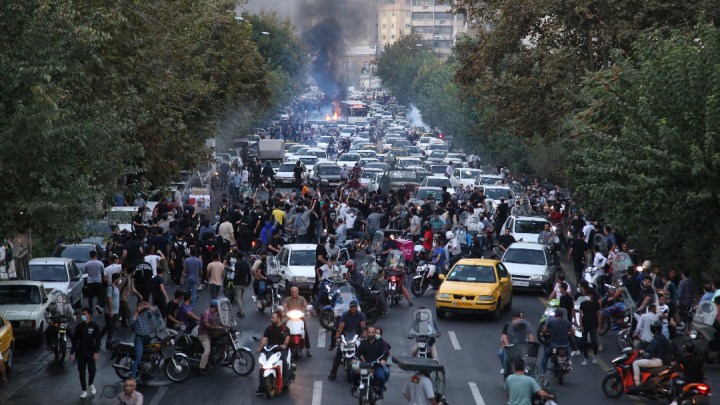
Iran’s internet crackdown prompts frustration — and workarounds
Iran’s internet crackdown prompts frustration — and workarounds

Protests against the Iranian government following the death of Mahsa Amini are now in their third week. The 22-year-old woman died in custody three days after being arrested by Iran’s so-called morality police. She was accused of wearing “inappropriate attire.”

Since Amini’s death, people around the world have taken to the streets to show solidarity with the people of Iran. At a recent protest in Los Angeles, participants chanted, “Zan, zendegi, azadi!” — Farsi for “Women, life, freedom!” — a slogan heard at many of these events.
“We’re all just having a big dream that someday, we can all walk like this in the streets of Iran — free — without any people telling you what to do, what to wear, what to say, what to think,” said Neda G., who declined to give her last name because she doesn’t want to endanger family in Iran.
At protests in Iran, riot police have responded with force. Iran Human Rights, a group based in Norway, puts the death toll so far at 133 people. Many more have been detained, and information is hard to get because the government has cracked down on digital access.
Felicia Anthonio, manager of the nongovernmental organization Access Now’s #KeepItOn campaign, said the government has blocked some of the few foreign platforms like WhatsApp and Instagram that it had allowed until recently.
“These shutdowns were imposed to clamp down on protests and to silence dissent” — and to limit evidence of violence, Anthonio said.
The Iranian government has a history of blocking digital access when protests break out, making it harder for citizens inside the country to organize and share information.
“I remember in 2019, there was a period where you just couldn’t get into contact with anybody,” said Assal Rad, research director of the National Iranian American Council and author of the book “The State of Resistance.”
This time, the government appears to be targeting certain apps and times of day, in contrast to the sweeping blackouts of 2019, “in part because shutting down the internet in that fashion — that sort of internet blackout — caused a lot of economic disruptions as well,” Rad said.
The internet monitoring group NetBlocks puts the economic cost of internet disruptions and mobile outages or restrictions in Iran at $37 million a day.
Billions of dollars were lost during the digital blackouts in 2019, estimates Mahsa Alimardani of the Oxford Internet Institute at the University of Oxford. She said both the government and the population are getting savvier.
“There has always been a kind of cat-and-mouse game when it has come to internet censorship in Iran,” Alimardani said.
The government has long blocked Facebook and Twitter. Alimardani said people have tried workarounds for those apps and others that have been blocked more recently. But she said Iran’s government is now using sophisticated tools against these efforts.
“The policy has been to really criminalize and eliminate the existence of [virtual private networks]. The playing field has heavily tilted towards the state,” Alimardani said.
But no matter how much Iran’s government has spent on censorship, she said still more workarounds exist.
Tech entrepreneur Hadi Partovi says a tool called Tor Snowflake allows people outside Iran to lend internet bandwidth to those inside. Using the Tor Snowflake browser, someone in Iran can visit blocked sites like Twitter.
“It first sends you to somebody else’s computer, which sends you to somebody else’s computer and to somebody else’s computer, which then sends you to Twitter,” Partovi said.
Partovi says disguising internet activity like this allows people in Iran — and other nations with repressive governments — to get around state censorship. They are able to “find out what’s going on, to get fair and free news, and also to communicate with each other and to share their stories.”
It’s a tool that so far, Partovi says, nobody has figured out how to subvert.
There’s a lot happening in the world. Through it all, Marketplace is here for you.
You rely on Marketplace to break down the world’s events and tell you how it affects you in a fact-based, approachable way. We rely on your financial support to keep making that possible.
Your donation today powers the independent journalism that you rely on. For just $5/month, you can help sustain Marketplace so we can keep reporting on the things that matter to you.

















